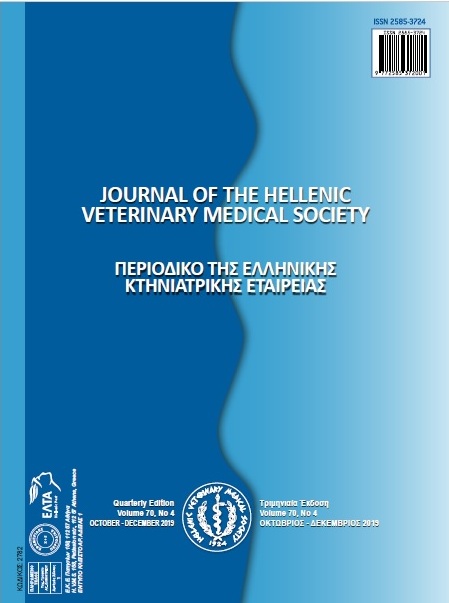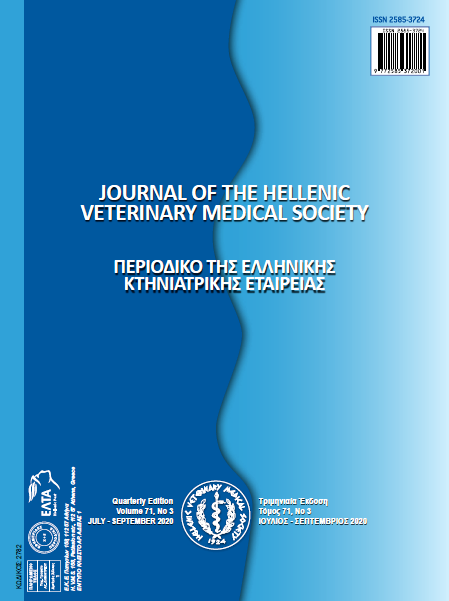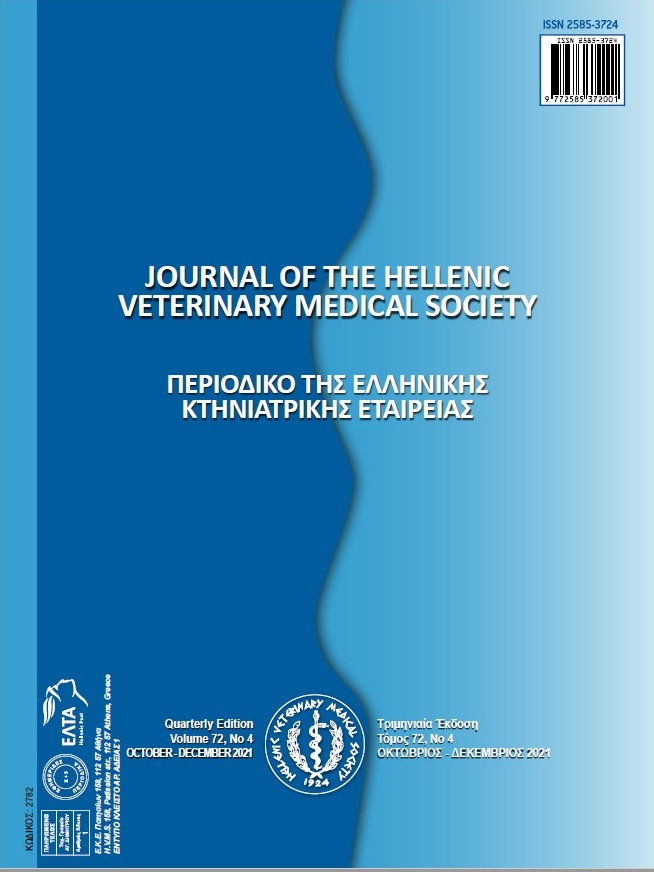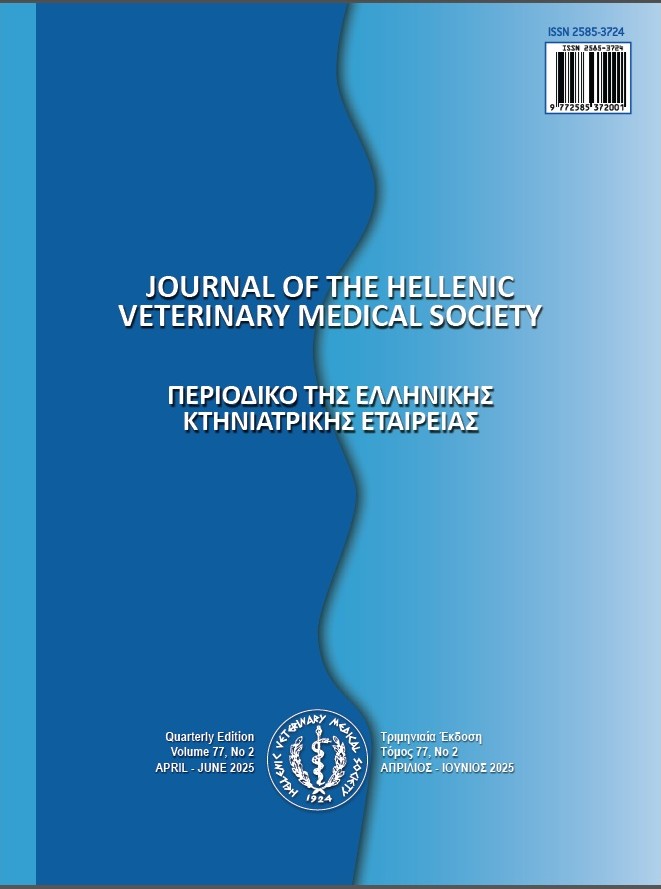Clinical and epidemiological profiles and outcome of non-traumatic myelopathies in dogs
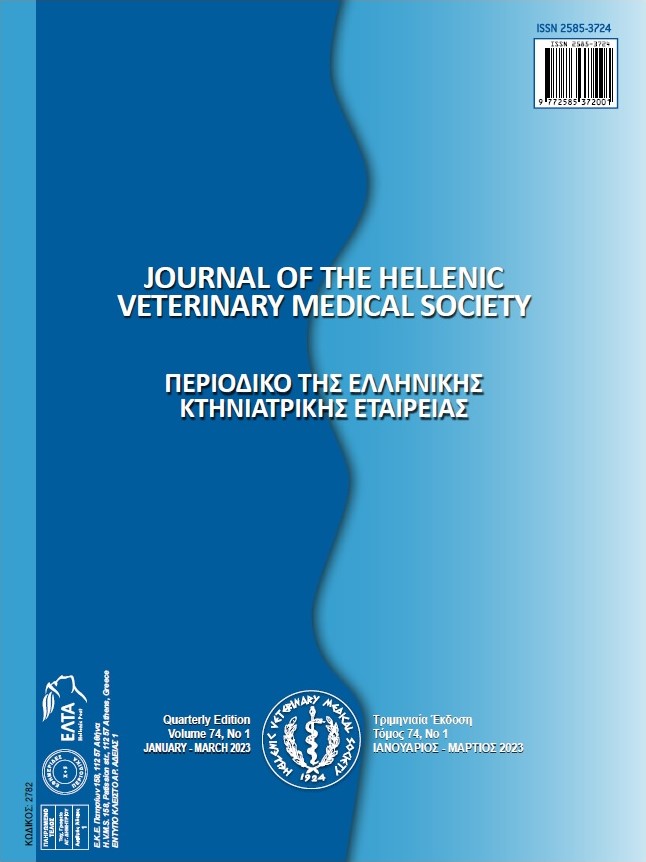
Résumé
Myelopathies, the disorders affecting the spinal cord, are classified into traumatic or non-traumatic. In dogs, intervertebral disc disease (IVD) is the most common cause of spinal pain and neurological deficits. The aim of the current study is to present the prevalence, clinical presentation, diagnosis and outcome of non-traumatic myelopathies of various etiologies, in dogs. This was a retrospective study in dogs. The inclusion criteria for the dog population included complete clinical records of the cases (physical, neurological examination, clinicopathological and/or diagnostic imaging), therapy, outcome and re-examinations. A total of 618 dogs were included in the study with a mean age of 6 years and a mean body weight of 12Kg. The neurological deficits appeared acutely in 346 dogs (56%).Paraplegia (201/618, 32.5%), paraparesis (144/618, 23.3%) were the most frequent neurological deficits, followed by spinal pain (61/618, 9.9%). In the majority of cases the lesions (374/618, 60.5%) were localized in the thoracolumbar spinal cord segments. Degenerative disc disease was the predominant diagnosis in the study population (212 dogs, 62.5%), followed by neoplasia (10%), congenital anomalies (6.2%), myelitis (5.9%) and, less frequently, discospondylitis (4.1%), caudal cervical spondylomyelopathy (3.8%) and meningitis (3%). There were few cases with extradural synovial cysts (2.1%), congenital myelopathies (1.2%), Chiari like malformation (0.9%). Regarding outcome, 476/618 (77%) dogs were alive at the end of the study. From the 476 dogs that were still alive, 278/476 dogs (58.4%) improved neurologically, 120/476 dogs (25.2%) were neurologically stable, 22/476 dogs (4.6%) deteriorated. Degenerative disc disease was the most common diagnosis in dogs admitted with paraparesis/ paraplegia. Myelography could diagnose secondary spinal compression caused by disc protrusion/ extrusion or any other cause. Corticosteroids and non-steroidal anti-inflammatory drugs (NSAID) were used commonly by the referring veterinarian in case a compressive myelopathy was suspected. Prognosis in dogs with degenerative disc disease type II is favorable when therapy was started soon after the clinical sign’s onset and the deep pain sensation was intact.
Article Details
- Comment citer
-
Baka, R., Balla, S., Kazakos, G., Patsikas, M., & Polizopoulou, Z. (2023). Clinical and epidemiological profiles and outcome of non-traumatic myelopathies in dogs. Journal of the Hellenic Veterinary Medical Society, 74(1), 5335–5344. https://doi.org/10.12681/jhvms.29415
- Numéro
- Vol. 74 No 1 (2023)
- Rubrique
- Research Articles

Ce travail est disponible sous licence Creative Commons Attribution - Pas d’Utilisation Commerciale 4.0 International.
Authors who publish with this journal agree to the following terms:
· Authors retain copyright and grant the journal right of first publication with the work simultaneously licensed under a Creative Commons Attribution Non-Commercial License that allows others to share the work with an acknowledgement of the work's authorship and initial publication in this journal.
· Authors are able to enter into separate, additional contractual arrangements for the non-exclusive distribution of the journal's published version of the work (e.g. post it to an institutional repository or publish it in a book), with an acknowledgement of its initial publication in this journal.
· Authors are permitted and encouraged to post their work online (preferably in institutional repositories or on their website) prior to and during the submission process, as it can lead to productive exchanges, as well as earlier and greater citation of published work.



